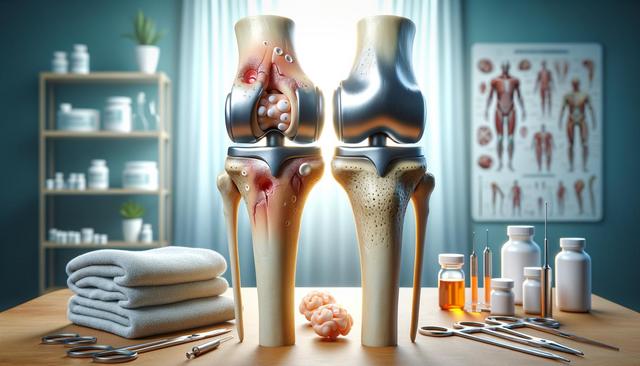Persistent Pain and Discomfort
One of the most frequently reported issues after knee replacement surgery is ongoing pain. While some level of discomfort is expected in the early weeks of recovery, persistent or worsening pain could indicate other concerns. Pain may stem from factors such as improper implant positioning, nerve damage, or infection. It’s important to differentiate between typical post-surgical soreness and pain that signals a complication. Patients should consult their healthcare provider if the pain does not gradually improve or becomes severe.
Some individuals may also experience pain due to scar tissue development, which can restrict joint movement. Physical therapy often helps in addressing this issue, but in more severe cases, additional medical intervention may be required. Pain management strategies include:
- Over-the-counter or prescribed pain medication
- Physical therapy and guided exercises
- Cold or heat therapy to reduce inflammation
- Injections for targeted relief in some cases
Understanding the cause of pain is key to effective treatment and smoother recovery.
Swelling and Stiffness
Swelling is another common problem that can occur after knee replacement surgery. Typically, it’s most noticeable in the first few weeks post-operation but can persist beyond that if not managed properly. Swelling occurs due to fluid buildup or inflammation as the body heals. Elevating the leg, using compression garments, and applying ice are common methods to reduce swelling.
Stiffness can accompany swelling or develop independently. It may limit the range of motion and affect daily activities. In some cases, stiffness results from joint adhesions or improper healing. To minimize stiffness, patients are usually encouraged to begin gentle movement as soon as their doctor advises. Key strategies to combat stiffness include:
- Routine stretching and strengthening exercises
- Regular physiotherapy sessions
- Use of assistive devices like continuous passive motion (CPM) machines
If stiffness remains unresolved, a procedure known as manipulation under anesthesia (MUA) might be considered to improve joint flexibility.
Infection Concerns
Though rare, infection is a serious complication that can occur after knee replacement surgery. Infections may be superficial or deep, affecting the tissues around the knee or the implant itself. Signs of infection include redness, warmth, drainage, fever, and increasing pain. Early diagnosis is crucial to prevent the spread of infection and protect the implant’s integrity.
Infections are generally treated with antibiotics, but more severe cases may require surgical cleaning or even replacement of the implant. Patients can reduce their risk of infection by adhering to post-surgical care instructions and maintaining proper hygiene. Preventive measures include:
- Keeping the surgical site clean and dry
- Following prescribed antibiotic regimens
- Reporting any unusual symptoms to a healthcare provider promptly
Monitoring for signs of infection is essential in ensuring a safe and effective recovery.
Implant Loosening or Mechanical Issues
Over time, some patients may experience mechanical problems with the knee implant. One such issue is loosening, where the implant loses its secure attachment to the bone. This can lead to pain, instability, and decreased function. Mechanical issues might develop gradually and are often identified through imaging tests such as X-rays or CT scans.
Contributors to implant loosening include high-impact activities, bone loss, or improper alignment during surgery. While modern surgical techniques aim to reduce these risks, some factors are beyond the surgeon’s control. Treatment for mechanical issues may involve revisional surgery, where part or all of the implant is replaced. Patients can help prevent mechanical problems by:
- Avoiding high-impact sports or heavy lifting
- Maintaining a healthy weight to reduce stress on the joint
- Attending regular follow-up appointments to monitor implant condition
Listening to one’s body and addressing unusual joint behavior early can help avoid more serious complications.
Nerve-Related Symptoms and Sensory Changes
After knee replacement surgery, some individuals report numbness, tingling, or burning sensations around the knee. These symptoms are usually related to nerve irritation or minor nerve damage during the surgical procedure. While many nerve-related symptoms resolve on their own over time, some can persist for months or become permanent in rare cases.
Understanding the difference between normal sensory changes during healing and signs of nerve damage is important. Nerve-related symptoms may include:
- Patchy numbness on the outer side of the knee
- Tingling or pins-and-needles sensations
- Sharp, shooting pains around the joint
In most cases, these symptoms lessen as the nerves regenerate. Treatments might include medications for nerve pain, physical therapy, or in some cases, consultation with a neurologist. Protecting the surgical area and avoiding excessive strain can also support nerve recovery. It’s important to communicate any unusual sensations to your healthcare provider for proper evaluation.




Leave a Reply